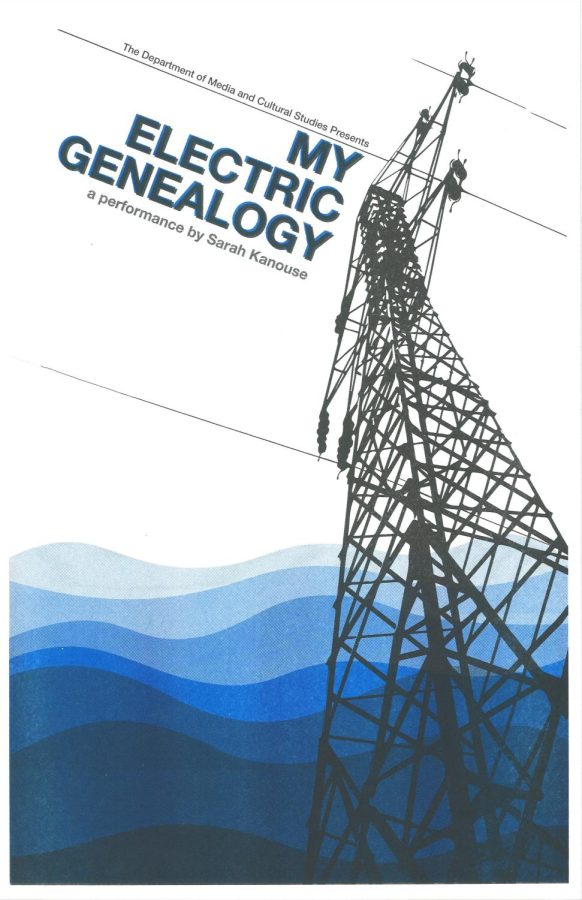“My Electric Genealogy”: A multimedia performance
February 2, 2023
On Feb. 1 in the humanities screening room, Sarah Kanouse performed “My Electric Genealogy,” a solo multimedia performance piece that asked the audience to think about socio-political issues and reflect on their own lives and families. Kanouse is an interdisciplinary artist and professor at Northeastern University in Boston. Through her work she blends film, sound and visual storytelling with performance focusing on politics, social and environmental movements. “My Electric Genealogy” explores both societal and familial politics and how they intersect with an individual’s sense of place.
As Kanouse writes on her website for the piece, “My Electric Genealogy” combines “live narration with moving images, choreographed movement and an original score”. Through this melange of mediums, she skillfully finds and presents the connections between generational trauma, physical and mental infrastructure and electricity. Kanouse chronicles her grandfather’s involvement in bringing widespread electricity to Los Angeles, from the “spider-vein network of lines connecting the city to its distant sources of power” to the Hoover Dam beginning in the early 1930s. Kanouse marvels at the progress in engineering at the time, and how it began to create a feeling of the sublime through feats of engineering. As she talks about this infrastructure, she asks the audience to consider an “infrastructure of feeling,” urging us to think about the connections between climate change, race, family, gender and more. Over 20 years after her grandfather’s death, Kanouse reckons with living in a world almost beyond repair, thanks to climate change, and being a direct descendant of someone who had a hand in making it happen. She connects feelings of neglect from her grandfather to how she aims to raise her own daughter. At the end of the performance, she asks the audience to think about what we will leave behind for our grandchildren.
The thought provoking piece was set to an original score and soundscape designed by sonic artist Jacob Ross. The incorporation of sound added to the emphasis Kanouse placed on feelings of connectedness with the environment. From family interviews to indigenous voices calling for climate action, the use of sound allowed for Kanouse to weave varied perspectives into her personal narrative. This feeling of connectedness was deepened by the incorporation of visual symbols throughout the performance. Kanouse incorporated costumes, props and even the physical copy of family photographs from her film, into the piece.
After the performance, Kanouse spent time answering questions, allowing the audience to understand the amount of time she has dedicated to this piece. She explained that due to pandemic related delays, she had the opportunity to add to the piece by interviewing members of the Navajo tribe, including updated information about the Diversionary Work Program transmission lines on their land. We also learned that the performance aspect of the piece was something that was originally a bit out of her comfort zone. Although she initially wanted to do a more film-focused project, she still found herself writing and speaking about the project. After encouragement from others, she knew that she had to be a part of the presentation and leaned into the performance aspect of the piece. When asked what she believes her grandfather would think of the piece if he could have seen it she replied with a laugh, “I think he would have been critical of it.”
A unique performance, “My Electric Genealogy” presents Kanouse’s views and experiences on a broad range of topics, personal and global, to paint a picture of her as a person and to pose hard questions that left the audience thinking.














